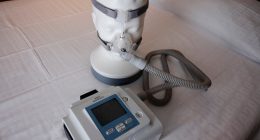In the hours and days after Diana, Princess of Wales was killed in Paris in 1997, one of the greatest sources of public anger towards the Queen centred on the royal standard, the flag which flies whenever Her Majesty is in residence at any of her royal palaces. When Diana died, the Queen was at Balmoral in Scotland and therefore no flag flew over Buckingham Palace. In the febrile days after the princess’ death, the palace rigidly refused to make any sort of concession towards the vast, vast public outpouring of grief and to make the symbolic gesture of lowering a flag of some variety in London. A keening Britain was outraged. “Where is our Queen? Where is her flag?” The Sun bellowed from the front page. Finally, a workaround was agreed upon: The Union Jack would be flown at half-mast during her funeral. However, today it would seem that when it comes to that pesky royal standard, there is some wiggle room and that the historic flag played a part in palace courtiers pulling the wool over the press and the public’s eyes last week during the Queen’s recent health scare.See, last Wednesday, only hours after the 95 year old had welcomed 120 business leaders to Windsor for a reception, it was announced that she would be pulling out of a planned two-day tour of Northern Ireland. The monarch, a palace spokesman said, had “reluctantly accepted medical advice to rest for the next few days.” As the press was concerned, the Queen was putting her feet up in Windsor. The royal standard was, after all, still flying high over her favourite castle. Only it turns out that on Wednesday night Her Majesty had in fact been ferried to King Edward VII Hospital in London for what the palace later characterised as “preliminary investigations,” where she spent the night, a fact that only emerged when The Sun broke the news on the following day. (It was the first time she had been hospitalised in eight years and then that was only for a night and for a stomach bug.) Palace aides had been caught out in not so much of a lie as having very neatly tap-danced around the truth. While in the case of Diana they had rigidly clung to protocol, now, they had let the standard continue to fly over the 1000-year-old stronghold where Her Majesty has been holed up since the beginning of the pandemic, even though she was in fact more than 40 kilometres away in London. Talk about a furphy up a flagpole. The fallout from both the evasive manoeuvring of courtiers and the shock over the Queen’s possibly declining health dominated the UK press over the weekend. While Her Majesty might be back at her weekend bolthole, last week’s drama has reportedly forced a significant rethink of plans going forward, with a proposal being drawn which will see a very visible change in the monarch’s public appearances. According to the UK Telegraph, the palace apparatchiks have made the decision that from now on, the Queen will always be accompanied by one of her children or grandchildren on all future engagements, ensuring that if health concerns force her to pull out at the 11th hour, the palace won’t be letting the Union Jack-waving public will be not let down. (As royal historian Hugo Vickers has said: “The problem is that the Queen does not want to disappoint people. She can say no to people, but by and large she doesn’t. What you’ve got to do is pace her.”)A source close to William and Kate, the Duke and Duchess of Cambridge told the Telegraph: “If there is any way they can support Her Majesty on her engagements, they will. They are both keen to provide any support they can.” Ten points for enthusiasm and all that but putting this new blueprint into practice will be no simple or easy feat of scheduling. While on paper, this new arrangement seems perfectly sensible, the reality is, the royal family is in the midst of a historic staffing problem. By that I don’t mean finding the veritable army of cleaners, press secretaries, under footmen and gardeners to trim hedges with nail scissors, but actual HRHs who can put their shoulder to the regal grindstone. In the last two years, the house of Windsor has lost 30 per cent of its senior working members thanks to Prince Andrew’s humiliating fall from grace and enforced exile from public life and Harry and Meghan, the Duke and Duchess of Sussex’s abrupt resignation. (I’m not counting the Duke of Kent, Princess Alexandra or the Duke and Duchess of Gloucester who are also working members of the royal family here because while diligent and loyal Windsor foot soldiers, could you actually pick any of them out of a line-up of septuagenarian toffs?)In 2019, the last year in which Harry, Meghan and Andrew were still officially on the books, they notched up a total 558 engagements, both in the UK and overseas. So too, Harry’s former honorary posts as Captain General of the Royal Marines, Commodore-in-Chief, Small Ships and Diving and Honorary Air Commandant of Royal Air Force Honnington are currently vacant. So too are positions of President and Vice-President of the Queen’s Commonwealth Trust and the patronages of the Royal National Theatre and the Association of Commonwealth Universities need to be filled. It has been left to the seven senior working members of the royal family still on the books to not only try and pick up some of that slack but to have to deal with the reputational damage that the Andrew and Sussex situations have done to the monarchy’s image. Her hospital stay has put the Queen’s demanding workload in the spotlight. Since October 1, the Queen has undertaken 13 separate audiences or meetings, opened the parliaments in Scotland and Wales, held a number of private meetings and attended seven major events including hosting that reception at Windsor. (According to the Times, “Before her guests arrived, the Queen and her closest aides had agreed a secret sign to whisk her away from the reception if she felt she was fading, but the coded signal was not needed.”) All of this she has done while still, daily and religiously ploughing through the stream of government papers that arrive via official red box daily.Next week, she will travel to Glasgow for the global climate confab, COP26 where she is expected to give a speech. As royal author Penny Junor pointed out this weekend: “I wonder if it is in reaction to the monarchy being in a questionable state, what with Prince Andrew, and then Harry and Meghan pulling out and then sniping at it. This is her effort to prove that the monarchy is thriving and there is no problem at the top.”As a source close to the Queen has told the Times: “She is knackered.”(It hasn’t been all work that has gotten us here with royal sources also telling the Times she has been enjoying “a constant flow of lunches and dinners with family and friends, because the Queen does not want to dine alone” and that she still loves to stay up late watching TV.)Her Majesty’s private secretary, Sir Edward Young, is now, reportedly under pressure to trim his boss’ relatively packed schedule and that, per the Mail on Sunday, the palace is currently working out which are the “core” events for her to focus on over the next year. This situation will only make the royal staffing crisis become more and more pronounced and the palace has a very celery ageing workforce. The average age of the entire groups of working HRHs still at it is 66 years old. As of William’s birthday in June next year, all of the working members of the royal family will be over the age of 40. In fact, of the Queen’s six adult grandchildren, the Duke of Cambridge is the only one who undertakes official duties. Contrast this to the situation of her grandfather King Georg V. Seven of his nine grandchildren would go on to work on behalf of the crown, or 77 per cent. For Her Majesty, that same figure sits at a dispirit 16 per cent. Prince Charles might have long espoused a slimmed-down version of the royal family, one not bloated by hordes of titled hangers on, but the current situation is not so much ‘slim’ as disturbingly malnourished. Sadly, this predicament raises the question of whether we will see Prince George start his public career sooner than his parents might like: The monarchy’s brand will be in dire need of some invigorating fresh blood by the time he hits his later teenage years. (Just look across the North Sea to Denmark where the Amalienborg Palace has started to dramatically increase the public profile of Prince Christian, the second in line to the throne, in recent months in the lead-up to his 16th birthday.)In 1947, to mark her 21st birthday, the then-Princess gave her first major address and spoke about her intention to embrace the “noble motto” held by the Kings and Queens who had come before her: “I serve.”That notion of unflagging dedication and duty to her people and country is still clearly as pressing for Her Majesty now as it was then. The question, that no one can quite answer is, who will be left to serve in the years to come? Daniela Elser is a royal expert and a writer with more than 15 years experience working with a number of Australia’s leading media titles.
Source: Sun Herald








